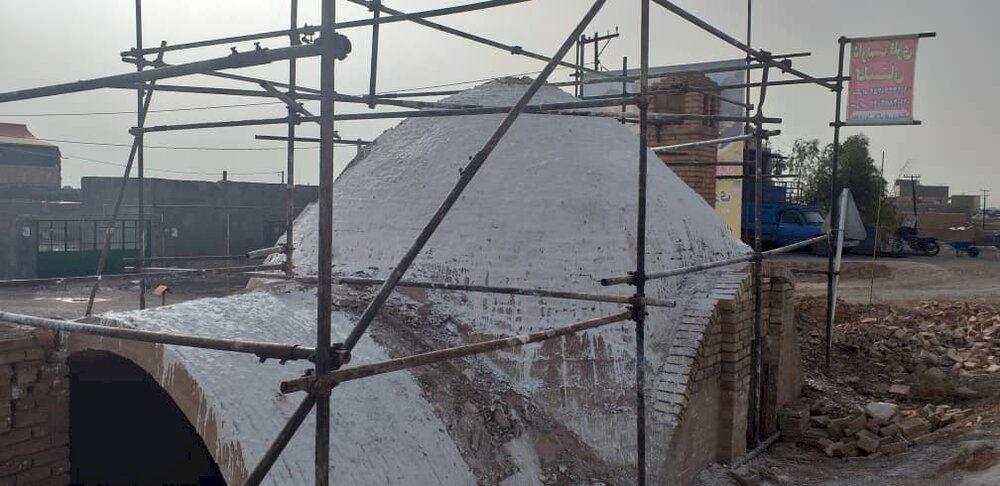Mudbrick cistern undergoes restoration

TEHRAN – A historical cistern in Garmsar, north-central province of Semnan has undergone some rehabilitation works, Garmsar’s tourism chief has announced.
The project involves strengthening the historical structure as well as repairing the damaged parts of Noh-Hesar Ab-Anbar, Mahvash Kamali explained on Tuesday.
The historical monument that has two wind catchers (bad-gir), has been inscribed on the national heritage list.
The term Ab-Anbar is common throughout Iran as a designation for roofed underground water cisterns. It associates with water management systems in arid areas that are reliant on permanent springs or seasonal rainwater.
Such underground reservoirs or Ab-Anbars are parts of the iconic qanat systems, which rely on snow-fed streams flowing down from surrounding mountains.
Qanats, according to UNESCO, provide exceptional testimony to cultural traditions and civilizations in desert areas with an arid climate.
The main population centers of Semnan province lie along the ancient Silk Road (and modern-day Imam Reza Expressway), linking Rey (Tehran) with Khorasan (Mashhad). While few visitors spend much time in the area, driving through you can easily seek out several well-preserved caravanserais (notably Dehnamak and Ahowan), cisterns (the Cafe Abenbar in Garmsar is a special treat), and ruined mud citadels (Padeh is lumpy but fascinating). The large, bustling cities of Semnan, Damghan, and Shahrud (Bastam) all have a small selection of historic buildings and Semnan has a fine old covered bazaar.
ABU/AFM
Leave a Comment